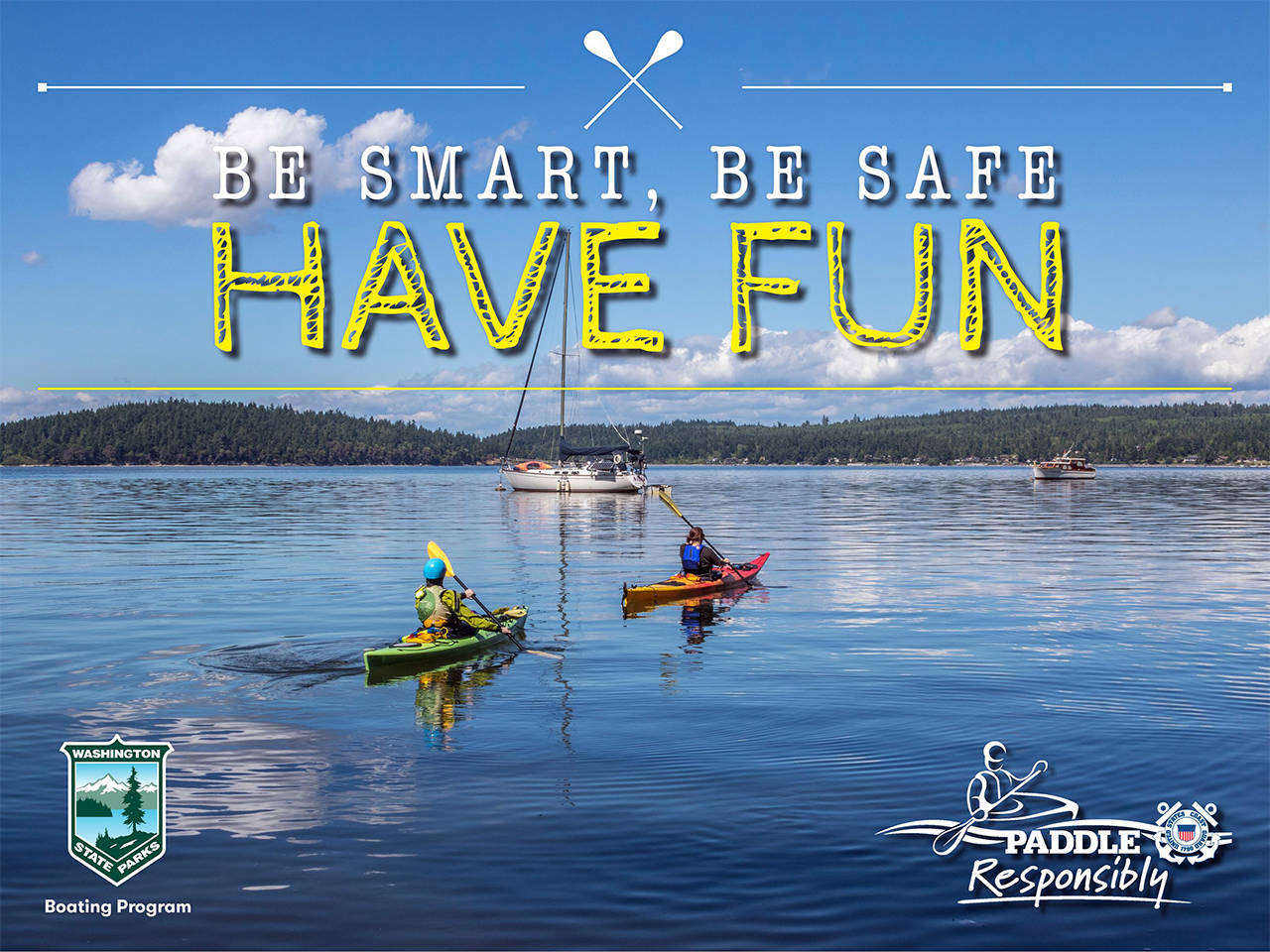Submitted by Washington State Parks
The Washington State Parks Boating Program wants paddlers to have fun on the water — while being safe. The Paddle Safe Week campaign, July 19–25, focuses on safe paddling practices and safety on Washington’s marine and fresh waterways throughout the year.
According to the Outdoor Foundation’s 2019 Special Report on Paddlesports and Safety, paddlesports continue to grow in popularity — especially kayaking and stand-up paddling. Yet only 23 percent of kayakers and 31 percent of stand-up paddlers have considered taking formal training to further their skills.
“These statistics are troubling,” said Rob Sendak, Boating Program manager. “Paddlesports are fun activities, but they also involve risk.”
“We strongly recommend people educate themselves,” Sendak added. “Educated paddlers make life-saving choices to increase their safety and reduce risk — such as always wearing a life jacket and filing a float plan.”
For the third year in a row, Gov. Jay Inslee has issued a proclamation declaring next week Paddle Safe Week.
Why is paddlesport safety so important?
According to national and state recreational boating accident data, paddlecraft are at a higher risk of capsizing and swamping.
Since 2012, close to half of all boating fatalities in Washington state involved paddlecraft.
Nationally, where cause of death was known, 79 percent of paddle-related fatalities from 2015 to 2017 involved drownings. Of those drowning victims, 74 percent were not wearing a life jacket.
The Boating Program recommends the following safety tips. More details are available at www.paddlesafewa.org.
Get educated
All paddlers are responsible for knowing laws and keeping themselves and others safe. At a minimum, people should take a course to increase their knowledge of paddlesport safety, emergency procedures and navigational rules.
Always wear a life jacket
State law requires all vessels, including canoes, kayaks and stand-up paddleboards, to have at least one properly fitted Coast Guard-approved life jacket for each person onboard. All children, age 12 and younger are always required to wear a life jacket.
File a float plan
Paddlers are encouraged to study their route in advance. Before going out on the water, even for a brief time, people should always tell someone their plan.
Carry essential gear
Paddlers should carry essentials for safety, emergency communications and comfort. State law requires carrying a sound-producing device, such as a whistle — even on a stand-up paddleboard.
Avoid alcohol and drugs
Operating any vessel while under the influence of alcohol or drugs, including marijuana, is not only unsafe, it’s illegal. Washington state’s Boating Under the Influence law applies to all boats including kayaks, canoes, stand-up paddleboards, rowboats and inflatable fishing rafts.
Check and understand the weather
Paddlers should check the weather frequently before and during their trip, keeping an eye on current conditions and forecasts. Check warnings, weather conditions, wind and wave forecasts, tides or river flows.
Protect against cold-water shock
Falling into water under 60 degrees is dangerous, and many of Washington’s waters — including lakes and rivers — remain below 60 degrees all year, even during hot weather. The biggest risk is cold-water shock — not hypothermia — which occurs in the first stage of immersion.
Be visible to other boaters
People should paddle to be seen by wearing bright neon colors and colors that contrast, putting highly reflective tape on paddles, using a flagpole and carrying a bright light.
Follow social media
Paddlers can learn more about and participate in the Paddle Safe Week campaign through social media by using some of the following hashtags: #PaddleSafeWeek, #PaddleSmart, #PaddleSafe, #PaddleSober, #PaddlePrepared, #PaddleToBeSeen
About the Washington State Boating Program
The Washington State Parks and Recreation Commission administers the state’s Boating Program, which provides leadership in boating safety and environmental education and outreach. The goal of the program is to reduce accidents and fatalities, increase stewardship of Washington waterways, and keep recreational boating a safe, accessible and enjoyable pastime. For more information on the Boating Program, visit www.parks.wa.gov/boating.




